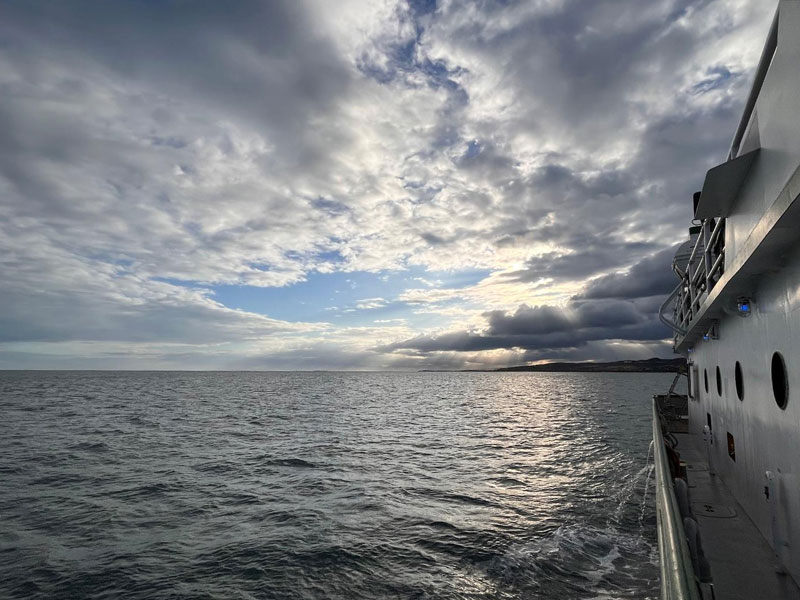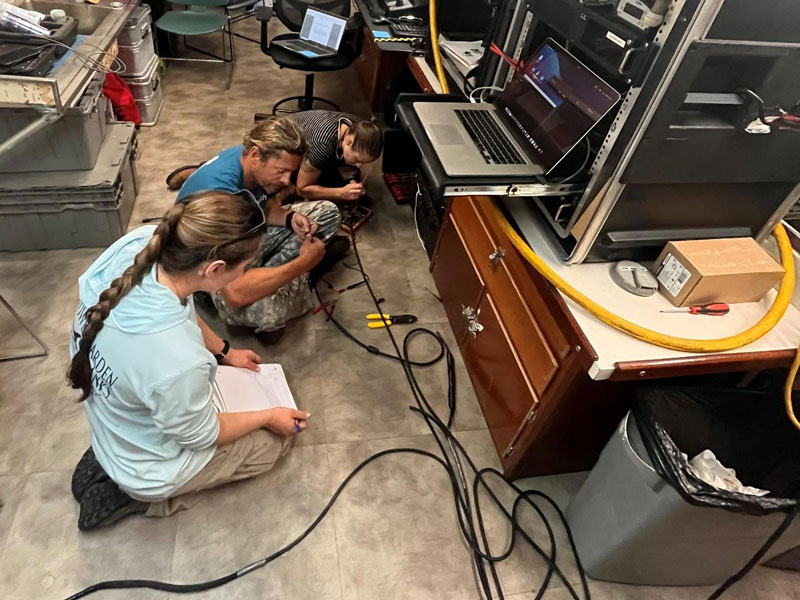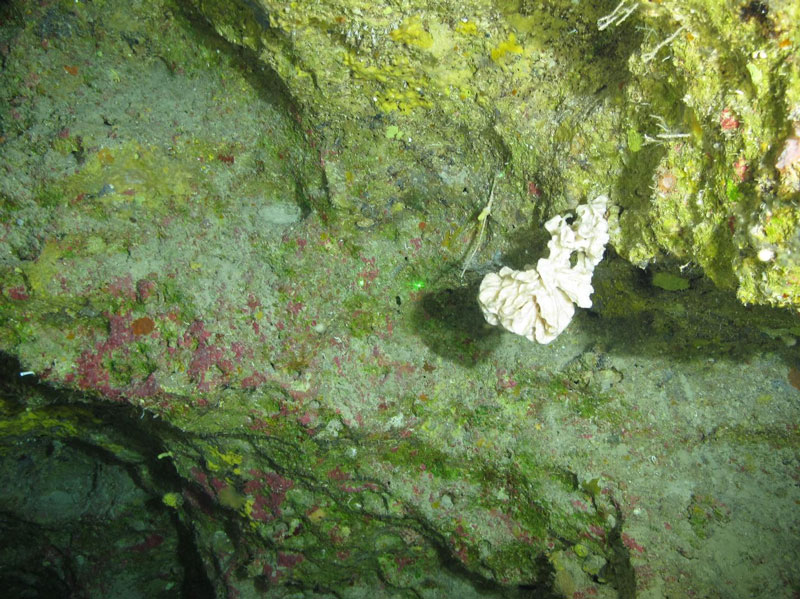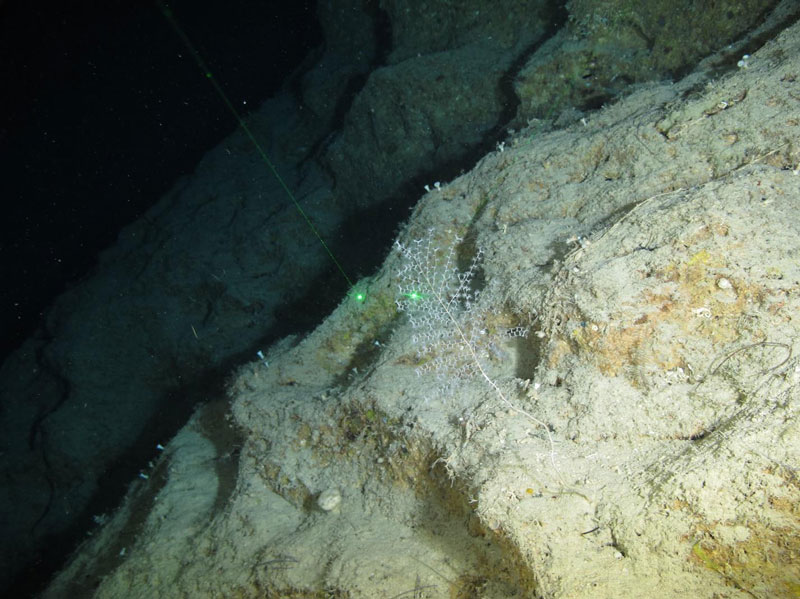Exploration of Deepwater Habitats off Puerto Rico and the U.S. Virgin Islands for Biotechnology Potential
The "Perfect" Dive
As a scientist, we often think of the perfect dive as a beautiful, biologically diverse site where we find and collect amazing organisms. The remotely operated vehicle (ROV) then returns to the deck with bioboxes full of new and exciting samples! Sometimes we take for granted all the pieces that need to come together to get that "perfect" dive! We are reminded of this whenever one piece doesn’t work as intended and a dive gets scrubbed, postponed, or ended early. On this trip, we were reminded a few times.

First, the weather… something we have no control over. Research Vessel F.G. Walton Smith made the transit to Puerto Rico in 10-foot seas. To ensure we could leave the port for the sampling trip on time, they decided to dock on the south side of Puerto Rico, in Ponce. The scientists all arrived by plane on the north side of the island in San Juan and could see the whitecaps from the plane. Good call, captain!
When we met the ship in Ponce, we discussed the weather forecast with the captain and ROV crew. With the strong east winds, it wasn’t looking like we’d be able to make it to the east side of the island or the U.S. Virgin Islands early in the trip. The forecast suggested the south side of Puerto Rico would be calm for a couple of days, so we decided to dive there and move to the west side of the island when the conditions improved. The news wasn’t great, but it also wasn’t a surprise. We had already planned several backup dive sites for the south and west sides of Puerto Rico, one of which was the site where a sponge (Raspaillidae) with a very potent compound that kills the parasite Cryptosporidium was found. If the weather forced us to stay in that area, we knew we would still be able to have a successful expedition.
On our first day, we were able to get in two dives: one in shallower water to make sure the ROV was working well and another to 200 meters (656 feet). We’d hoped for a third dive, but the wind picked, and we had to scrub it. Overall, our first day of dives went well! The science party established who was responsible for each job and processed the first day’s samples. We were ready for Day 2.
On the morning of Day 2, the weather was gorgeous. At 8 a.m., we launched the ROV. After a short time on the bottom, the captain said there was an issue with one of the ship’s engines, and we needed to bring the ROV back on deck.
The ship’s engineers diagnosed the issue quickly and determined what needed to be fixed. Unfortunately, this couldn’t be done at sea. So, we headed back into port. Thankfully, we weren’t far off Ponce. In port, the engineers found what they needed and worked the rest of Day 2, into the night, in the hot engine room to make the repairs.
Thanks to the crew’s dedication and hard work, we left the dock at 6 a.m. the next morning. We had two great dives on Day 3. We collected some unusual organisms and saw big groups of sea urchins!
On Day 4, we moved further west. When the ROV launched, there were some issues with tracking it. We decided to bring it back on deck so the ROV crew could figure out what the problem was and take care of it. After a couple of hours of troubleshooting, they determined the issue — and that it couldn’t be fixed during the expedition. Even though this meant it would be more difficult for the ROV pilot to keep the ROV oriented to the ship from then on, we continued to dive. We launched again mid-morning and completed two successful dives.

The weather on the west side was beautiful on Day 4, and the increased winds and seas that were forecast for the afternoon held off. That allowed us to make it farther north along the western side of the island to the area off Isla Desecheo on Day 5.
The next few days of ROV operations were perfect!
On the eighth and last day of ROV operations, we were back on the south side of the island off Ponce. The wind was calm that morning, but the forecast called for increased winds and seas in the early afternoon. We dove on a near vertical wall of eroded limestone with lots of crevasses and deep ledges. There were no fish, but we did find sponges and corals. Unfortunately, the forecast was correct, and the wind and waves increased substantially. We had no choice but to scrub the afternoon’s dive and head back into the Port of Ponce.


Overall, we had a very successful expedition. We conducted 16 successful ROV dives with nearly 48 hours of ROV bottom time and collected 136 organisms (mostly sponges). Despite mechanical failures, technical issues, and difficult weather, we managed to have many "perfect" dives. The "perfect" dive IS the dive you are on!
By Priscilla Winder, Harbor Branch Oceanographic Institute, Florida Atlantic University
Published July 24, 2024